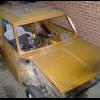Posted 11 January 2011 - 10:50 PM
Yes I'd though that some of the above was a joke, that's why I edited out all the stuff I put but unfortunately for me Burnard quoted it!
There is a name for the type of reaction where the same quantity of energy is released performing the reaction one way as is consumed reversing it. I can't remember the name, but hydrogen / oxygen isn't one. It takes more energy to split them than is released in joining them I believe, it's all to do with entropy probably. Most things are.
Fuel cells are very, very, seriously old technology. They have been around for decades, they are what electrically powered the lunar landers and countless other high technology machines. Car manufacturers and governments seem to love them but they will demand a complete overhaul of the existing transport infrastructure. A far better solution is a hydrogen fuelled internal combution engine. It provides the same benefits in terms of emissions, similar energy output, greater losses however in terms of having a transmission and frictional losses in the engine and pollution associated with lubricants and fluids but the actual experience of dealing with, owning and operating a vehicle would be largely unchanged. The hard part is the fuel. Producing that much hydrogen would demand a lot of electricity (or a lot of the precursor chemicals needed for other hydrogen producing reactions). How do you store it? How do you transport it? Liquid hydrogen is one of the most dangerous and volotile substances mankind has dealt with. The storage tanks for it at rocket lauch sites tend to have several miles of nothing around them as a precaution. Imagine an lH2 transport tanker turning over on the motorway, it would make Buncefield look like a firework. You must have seen the film of the Hindenburg disaster, and that was gasseous hydrogen at nearly atmospheric pressure burning relatively slowly. So cryogenically storing it as a liquid is not realistic on this scale. Companies are working on methods of trapping it in salts and in other states where it can easily be extracted for use, making it harmless in its stored state. That is the big thing that needs to be solved. There are a few liquid H2 filling stations around the world, and California is supposed to be bringing them in large scale but realistically it's this that is holding everything back.























